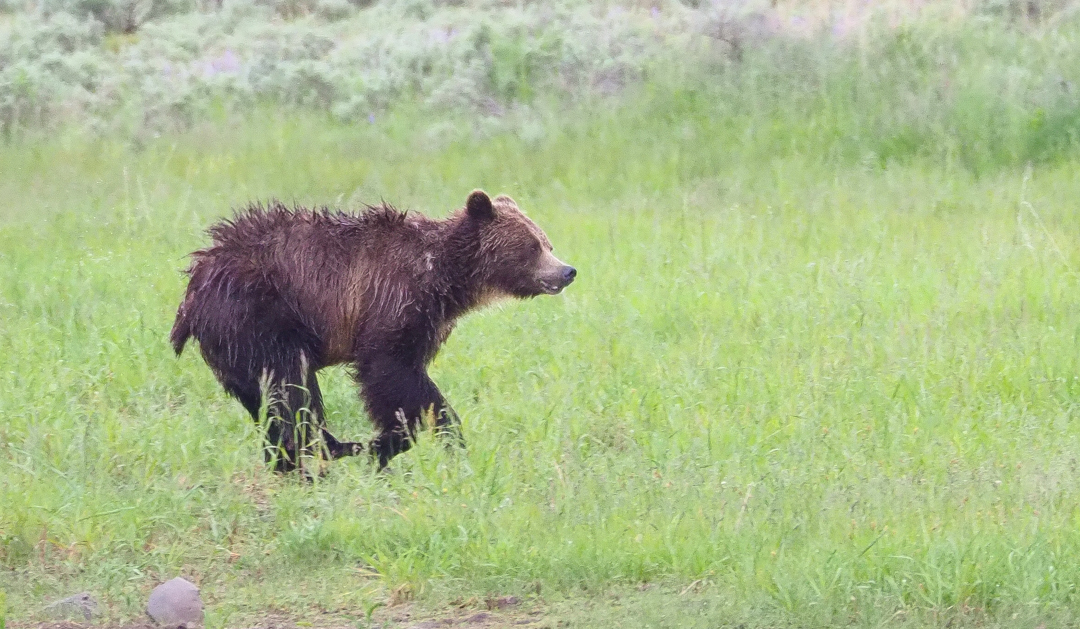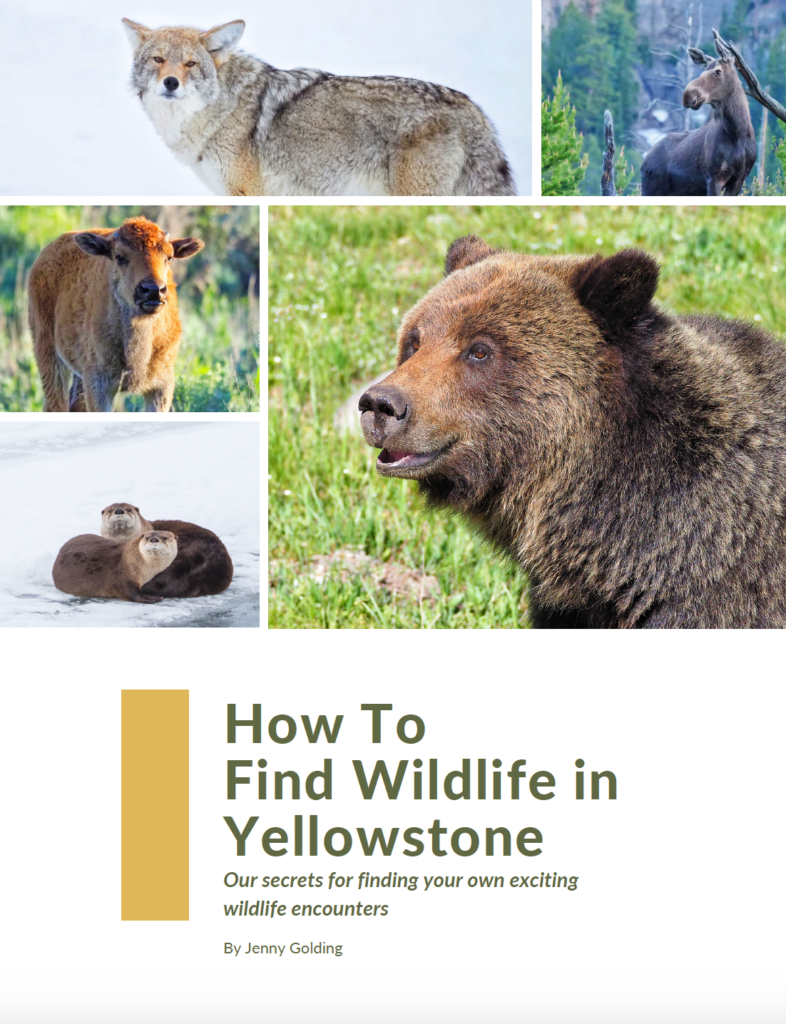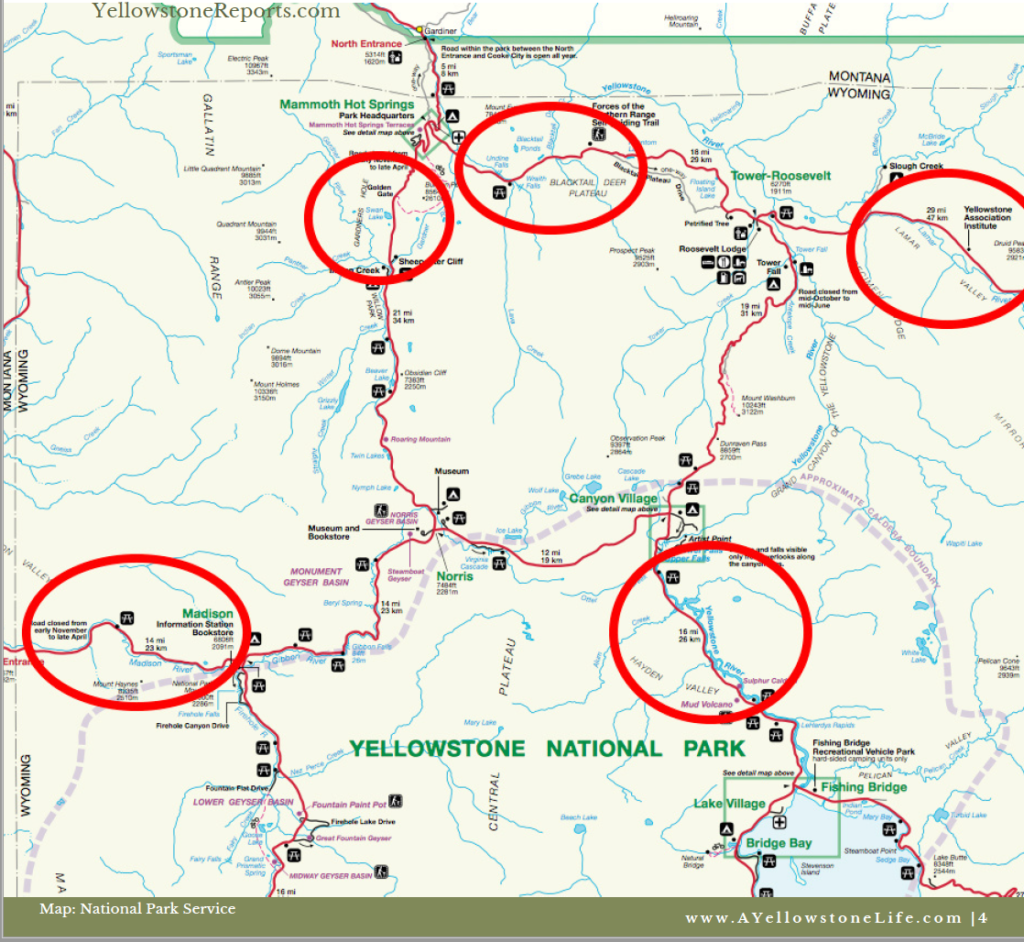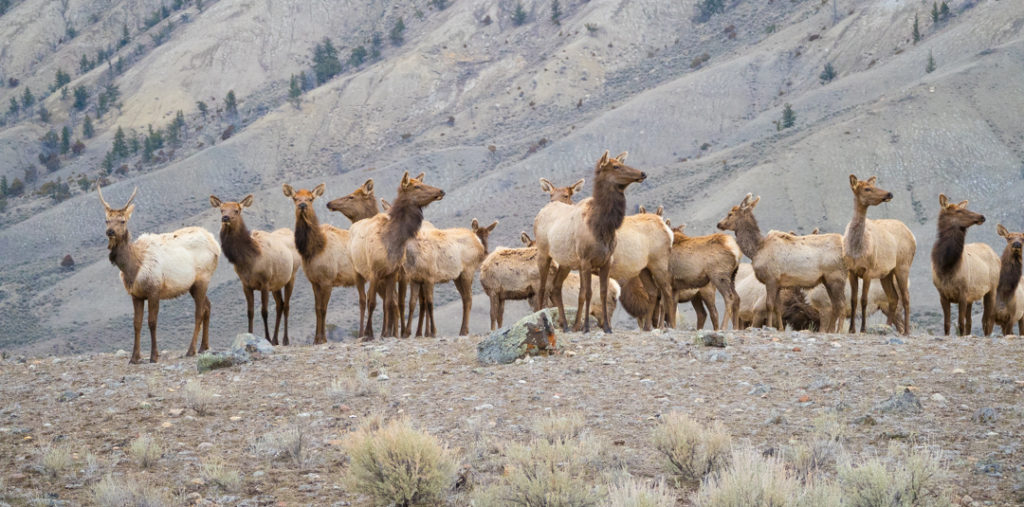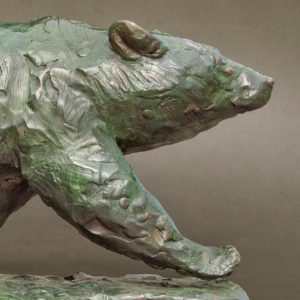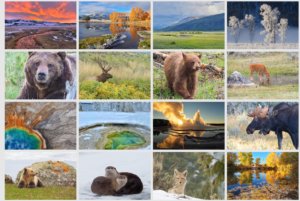Finding Yellowstone wildlife is about a lot more than simply driving through the park and hoping for the best…
You can still see a lot that way (especially bison and elk), but if you want to experience those “National Geographic” moments, you need to hone your skills at observation with these tips.
We’ve been living, working, teaching, and guiding in Yellowstone for almost two decades, and have delivered many thousands of educational programs for visitors of all ages from across the globe. Yellowstone and its wildlife and landscapes is the inspiration for our art, writing, and photography. Here is our advice for going beyond the tourist experience and seeing more wildlife than you ever imagined.
Tip #1 Hang out where and when the wildlife do
Go where the Yellowstone animals are!
Wildlife can be found almost anywhere in Yellowstone, but the big, open areas of the park like Madison Valley, Hayden Valley, Lamar Valley, Swan Lake Flats, and Blacktail Plateau are some of the most likely places for good viewing.
Some animals – like bears and wolves – can have surprisingly consistent travel patterns; get a handle on where specific animal species have been hanging out by seeking local knowledge. Ask about recent sightings at park visitor centers, the Yellowstone Forever Store in Gardiner, Montana, or online at YellowstoneReports.com or Facebook groups like Yellowstone Insider’s Hub, and Yellowstone For the Benefit and Enjoyment of the People.
Go early and stay late if you want to see Yellowstone wildlife
To have the best chance at finding a variety of wildlife species, you’ll need to set your alarm early. Aim to be out in wildlife habitat by sunrise, or in the last couple of hours before sunset. This means being up and ready to go an hour before sunrise and coming
back after dark. Many predators (like wolves and bears) are “crepuscular:” their activity
is concentrated at the twilight periods. While you may still see them during the day, your chances are greater near sunrise and sunset.
Tip #2 Tune in to what’s going on around you
Use your eyes first to search for Yellowstone wildlife
Start without using any optics; it’s amazing how easy it is to miss something by going straight into “looking.” Scan back and forth across the landscape, as if your head is on a slow swivel, like an owl silently scanning for prey. Pick out as many animals as you can and look for changes in movement or behavior.
Often the behavior of one animal can clue you in to the presence of something else. For example, elk who were grazing suddenly grouping together and looking very alert can indicate a predator nearby.
Silence your voice and open your ears to discover more wildlife
Unnatural sounds are your enemy when searching for wildlife. Animals can hear human sounds from several miles away. Random noise also prevents you from hearing sounds, like howls, that might clue you into a wolf or a coyote.
Avoid loud clothing, talk in whispers, turn your car engine off, and close the door with a push rather than a slam. Step away from the bustle of the roadside and attune your senses to what’s around you.
When you hear a howl or other sound, it may help you to close your eyes and try to pinpoint the source of the sound with your ears alone; then open them and start scanning in that narrowed field.
Get out of the car and off the road
It’s so easy to be focused on getting to locations with a high likelihood for wildlife viewing that you miss much more than you realize. Even veteran wildlife watchers fall into the habit of driving up and down the road system and hanging out where the crowds are. Remember: there is something going on everywhere, all the time.
Find a pullout in any wildlife habitat and tune in to the show. Park your car, turn off the engine, get out, and just hang out in one spot for a while. Take advantage of quiet time outside your vehicle and you will be surprised at what you’ll get to see. Plus, you’ll be surrounded by the magic of Yellowstone, no matter what happens.
Tip #3 Try Eavesdropping on Yellowstone’s wild conversations
Wolves, coyotes, foxes, bears, elk, bison, ravens, magpies, eagles, and all other animals’ lives depend on knowing what their neighbors are up to. Watch and listen to them.
Because these creatures’ senses eclipse our own, they are some of your best guides to what’s happening in their world.
For example, listen closely to ravens for distinct inflections in tone; they can be quite expressive in the use of their voices. Muffled or high pitched calls can indicate something of great importance. You can bet the magpie (below) will tell its friends about this bison carcass. If you follow clusters of ravens or magpies with your eyes, they’ll often lead you to a carcass – and possible sightings of bears, coyotes, eagles, and wolves.
Yellowstone animals are communicating all around you!
What do these elk tell you about what’s happening around them?
Notice patterns and ask questions.
Once you become accustomed to observing animal behavior, you’ll begin to notice changes in that behavior. What are animals doing when they are doing “nothing”? Does the elk herd in this picture look like the group is grazing peacefully? If not, why not? What’s going on behind the scenes? Keep watching…these are the kinds of questions and observations that will help you see what most people miss.
Tip #4 Learn how to coexist with Yellowstone’s wild animals
This is their home; give them the space they need to survive and thrive.
For your safety and to protect the animals, Yellowstone National Park regulations require that you stay 25 yards from most wildlife, and 100 yards from bears, wolves, and nesting birds.
Resist the temptation to get closer for a photograph; it will endanger both you and the animal. Even if you are adhering to park regulations, if your behavior makes an animal change theirs, you’re too close.
If you go hiking, it’s important to take water, sunscreen, extra clothes, and bear spray. Hike in groups of 4 or more, and make noise as you walk, to reduce the chances of surprising a bear.
Become a steward of the park’s wildlife, not the one who keeps an animal from doing what it needs to survive.
HAPPY YELLOWSTONE WILDLIFE WATCHING!
Want to know a secret? You can use these wildlife watching tips anywhere you go!
While there is a lot more to learn about wildlife in Yellowstone, these are the basic methods we turn to again and again to find animals in the wild.
The key is to be patient, observe what’s happening around you, and ask questions. If you practice what you read here, you will see more than you thought possible. While these tips are useful in Yellowstone, you can actually use them anywhere you go…even your own backyard!
Give them a try!
Want to learn more about Yellowstone wildlife? See where to find Yellowstone wildlife.
Ready to delve deep and become a wildlife watching expert? Check out our online course Eavesdropping on Wild Conversations: Decoding the Secrets of Animal Language for Ultimate Wildlife Encounters.
Photos © Jenny Golding

